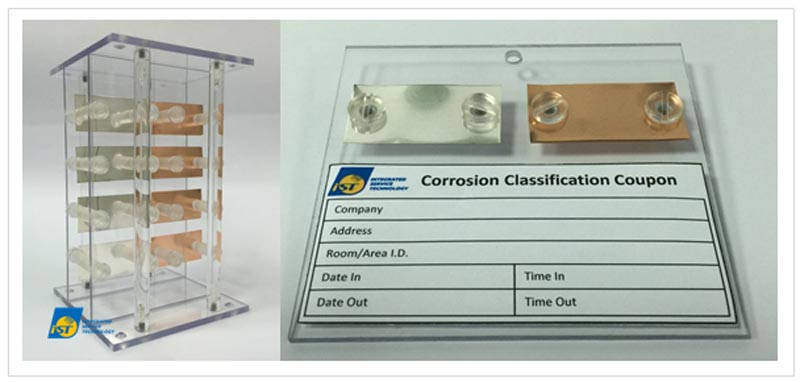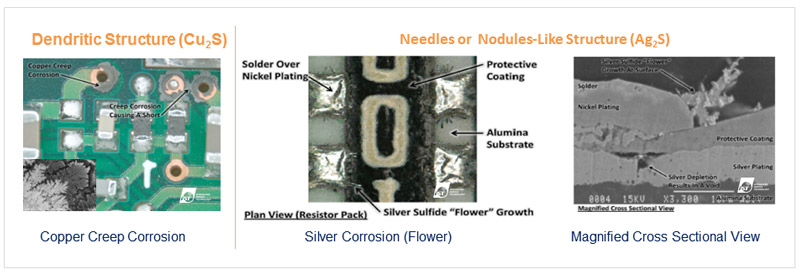Issued Date:2020/7/16air quality
Issued By:iST
Customer requires your product needs to survive 5 years in field/end-user environment.
And also meets the air quality standard of ISA 71.04 compliance for G2 or G3 level.
What is the G2 and G3 level? What is the ANSI/ISA 71.04?
As the value suppliers, how to face the requirements from customers?
air quality
Due to the proliferation of Information Technology (IT) equipment applications, including Artificial Intelligence (AI), Big Data, 5G, Internet of Things (IoT) and Edge Computing in recent years. Therefore, the hardware reliability of IT equipment is paid more attention in the industry. With the more and more severe air pollution in the world, it will cause severe corrosion and also reduce the life time of electronic equipment once there is higher concentration of sulfur-bearing gases, such as hydrogen sulfide (H2S) and sulfur dioxide (SO2) of indoor and outdoor environments. Therefore, it is very important to understand the severity level of air quality in field/end-user environment.
How to monitor the severity level of air quality and also effectively conduct the accelerate corrosion test? iST can provide the turnkey solution which adopted Air Quality Monitoring (AQM) service and specific analysis method. Besides, the results will be feedback to the accelerate corrosion testing methods, including Mixed Flowing-Gas (MFG) and Flower of Sulfur (FoS) as well as satisfy the warranty/guarantee verification of product in field/end-user environment. Figure 1 shows the Air Quality Monitoring (AQM) service in field/end-user environment that iST provided.

Figure 1: Air Quality Monitoring (AQM) service in field/end-user environment
In this coursework, we will introduce what ANSI/ISA 71.04 is. How to conduct the test?
And two accelerated corrosion tests, including Mixed Flowing-Gas (MFG) and Flower of Sulfur (FoS) in iST Lab.
1. What is ANSI/ISA 71.04?
A guideline from the American National Standards Institute (ANSI)/International Society of Automation (ISA) 71.04-2013 standard which classify the severity of air quality of field/end-user environment into four levels, including G1, G2, G3 and GX. To classify the measured thickness of airborne contaminants into the various severity level rankings by using pure copper and silver metal coupons exposure at field/end-user environment with one month. Table 1 shows the four severity levels of field/end-user environment in ANSI/ISA 71.04-2013.
Table 1: Four severity levels of field/end-user environment in ANSI/ISA 71.04-2013
Severity Level Reactivity Copper Corrosion Silver Corrosion G1 Mild < 300 Angstroms / 30 days < 200 Angstroms / 30 days G2 Moderate < 1,000 Angstroms / 30 days < 1,000 Angstroms / 30 days G3 Harsh < 2,000 Angstroms / 30 days < 2,000 Angstroms / 30 days GX Severe > 2,000 Angstroms / 30 days > 2,000 Angstroms / 30 days The effects of corrosion are measurable and may be a critical factor in determining electronic equipment reliability when the severity level of air quality is greater than or equal to G2. In general, there are two common-corrosion failure modes, including copper corrosion and silver corrosion. Figure 2 shows two common-corrosion failure modes of IT equipment in data center, including copper corrosion and silver corrosion.

Figure 2: Two common-corrosion failure modes of IT equipment in data center
(Source: 2011 Gaseous and Particulate Contamination Guidelines for Data Center)2. High-Level Accelerated Corrosion Testing: Mixed Flowing-Gas (MFG)
MFG test is an environmental stress laboratory test intended to simulate contaminated industrial ambiance. There are many controllable parameters, including temperature, relative humidity, corrosive gases type (e.g. H2S, Cl2, NO2, SO2, NH3 and O3…etc.), concentration and gaseous flowing rate, etc. Therefore, MFG has high availability to simulate the field environment corrosion. However, there are many controllable parameters, complex equipment setup and continuous constant-flowing corrosive gases. Therefore, the downside of the MFG test is the high cost of the test.
3. Entry-Level Accelerated Corrosion Testing: Flower of Sulfur (FoS)
FoS is a humid sulfur vapor test. Typical test method that consists in exposure of a specimen to sulfur vapor is disclosed in ASTM B809-95 standard. The method is intended for detection of porosity in metal coatings. Because less controllable parameters (temperature and relative humidity), simple equipment setup and only one single corrosive gas (sulfur vapor, S8).
FoS test is relatively inexpensive, short testing duration, compared with MFG test. However, the downside of the FoS test is the limited availability to simulate the field/end environment corrosion. Besides, there is only single corrosive gas (sulfur vapor, S8) which cannot drive the mechanism of creep in metal corrosion. Only slight migration of corrosive products with limited metal area was observed even in high relative humidity as testing condition. Besides, higher temperature will caused the effect of Volatile Organic Compounds (VOC) from test sample which will induce the low corrosive reactivity and lost control the testing condition. Because the FoS test is in a sealed container. Therefore, the relative details and procedure standardization are very important for FoS test.
4. Both testing methods are necessary exiting and also complementary each other.
Due to copper and silver metal materials were wildly applied in electric products. Therefore, there are two corrosion failure modes, including copper corrosion and silver corrosion. To consider the failure mechanism and gaseous reactivity limitation are different between both metal materials corrosion. MFG test is suitable to duplicate the copper corrosion and creep corrosion, and then FoS test is suitable to duplicate the silver corrosion failure occurrence. Therefore, MFG and FoS testing methods are necessary exiting and also complementary each other for a completed corrosion verification of electric products.
Table 2:Methodology Comparison between Mixed Flowing-Gas (MFG) vs Flower of Sulfur (FoS) tests.
Methods MFG Test FoS Test Corrosive Agents Used H2S, NO2, SO2, Cl2, NH3, O3 Octasulfur S8 Test Parameter Monitoring Corrosive gases, RH, T, air flow rate
RH, T Test Parameter Control all parameter can be independently controlled and adjusted T, RH, S concentration can be controlled Corrosion Products sulfide, sulfate, chloride, oxide, nitrate sulfide, oxide Equipment & Maintenance Cost high low Equipment Setup complex simple Corrosive Gas-Flowing laminar and uniform non-laminar Test Chamber Size large moderate Corrosion Reactivity Ag: low; Cu: high Ag: high; Cu: high
If there are any requirements regarding the various gaseous corrosion tests. Or you would like to understand the severity level of air quality in field/end-user environment, and also verify if there is any corrosion fail occurrence during the warranty/guarantee of product, please kindly feel free to contact with Joshua Hsueh, at +886-3-579-9909 #6486 │ Email: WEB_GE@istgroup.com
